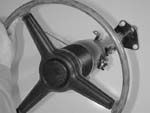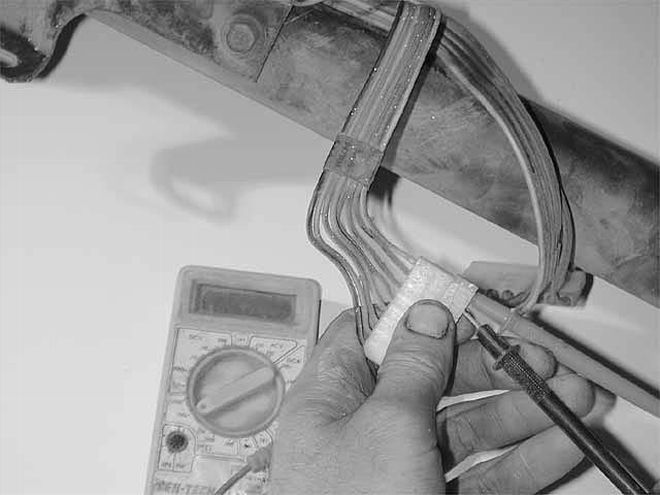
There's a fine line that separates the look of a fully rebuilt Moparfrom a car that is just fixed up. Be it a purist's authentic resto or atastefully and functionally modified car, you can always spot themachine that received the whole nine yards. Everywhere you look, it'squality, clean, and like new or better. To perform the total rebuild,you must go into each component and work the details before moving tothe next. You'll find yourself working on components of the car thatmost guys take for granted. How many late-model Camaro or 5.0 Mustangguys will blueprint the pedals, rework the window mechanism, or, as wedo this month, fully rebuild a steering column? Not many, we guess.
The details truly make the difference. Take the oft-neglected steeringcolumn. Slip behind the wheel of a nice looking Mopar, and the littlethings can detract and annoy. These cars are 30-plus years old and showit: The steering wheel begins to growl when turned, the signals won'tself-cancel or work at all, and the ignition key has to be wiggled toget the engine to fire. Suddenly, that pretty Mopar acts like a tiredold car. By the same token, if the wheel turns as smooth as silk, thecontrols snap positively like they were made yesterday, and the finishquality looks better than it did leaving Hamtramck, the sense of qualityprevails. We had all types of woes brewing in the column of our '71Challenger R/T: faulty electronics, a junkyard-quality finish, anddried, dirt-encrusted bearings made it anything but a smooth operator. Afull cosmetic and functional rebuild set us back a couple of days, butit put us way ahead of the game when it came to a quality resto effort.

Testing 1-2-3
A few tests can quickly identify a bad signal switch, saving thepotential frustration of putting together the column and tearing it downagain to replace the switch. Here's how to test it:
Horn: The switch provides the ground for the horn relay. This isthe black wire. Bridge a test light from the black output wire to a hotsource. The light should fire when the horn is depressed, and if itdoesn't, suspect a fault in the switch or horn contact plates.Substitute a multimeter for the test light by checking for continuitybetween the same wires.
Brake lights: The brake lights on Mopars share a common bulb withthe turn signal and feed the brake lights through the signal switch. Afailure in the turn-signal switch is a common cause of frustration whenbrake lights refuse to function (the signals may even work fine). Tocheck for a problem in the column, center the turn-signal switch and runa hot jumper wire to the white brake-light feed wire at the switchconnector. The test light should come on when contacted to the brown(right rear) and green (left rear) wires, which feed the rear brake/turnlight elements. With the switch to the right, only the green should belive, and only the brown should be live when the switch is in the leftturn position. If this isn't the case, a problem is in the switch.
Turn signals: The turn signals feed through the red wire, whichdraws its juice through the signal-flasher unit. To check the signalswitch, connect a jumper wire to the white feed wire at the switchconnector. There are four output wires for the turn-signal system, onefor each corner of the car. Turn the switch to the right. The brown(right rear) and tan (right front) wires should fire a test lamp, andthe green (left rear) and light green (left front) wires should be livewhen you turn the switch to the left. Failing this test, the switch isfaulty.